So by design, a landfill contains very little air or moisture, two components necessary for biodegradation to occur. While believed to be safe and non-toxic, this crystal-like gel material freaks out many a parent if it escapes from a soaked disposable diaper's absorbent core and onto the baby's skin. Berry Brazelton , however, believes that toilet training is the child's choice and has encouraged this view in various commercials for Pampers Size 6, a diaper for older children. Other animals that are sometimes diapered include female dogs when ovulating and thus bleeding, and monkeys and apes or chickens. So, breathable non-woven fabrics like the ones you produce can be an excellent choice for diaper manufacturing, especially for the inner layers that come into contact with the skin and are responsible for moisture management and comfort. So while a pattern on the back cover may not cause a problem, colored leg cuffs might. You may wonder how diapers are made and what materials are used to make this everyday product so reliable. Download as PDF Printable version. Retrieved 28 November Augustine Clarence Gamble A. The desire to keep baby from being exposed to dioxins is the primary motivation for using chlorine-free diapers. Washing cloth diapers at home uses 50 to 70 gallons approx. However, we would assume that in practice the inclusion of more biodegradable materials would result in some portions of the diaper possibly breaking down faster than less biodegradable options; but "faster" is relative and might only mean tens of years instead of hundreds. In the company launched its newest diaper line called Pampers Pure [6] which was designed without chlorine bleaching, fragrance, lotion, parabens, natural rubber latex and 26 allergens identified by the European Union. This photo shows the same brand diaper Bambo , cut in half to reveal the absorbent core, when dry top and when wet after an overnight wetting below.
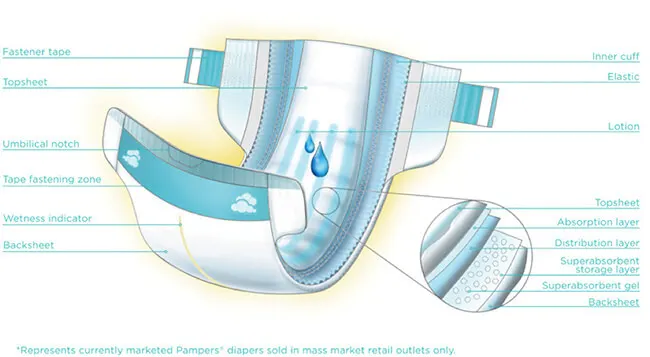

Retrieved October 1, Some were too uncomfortable, making it complicated to put on diapers. September 2, It wasn't long, however, before mothers realized the practical everyday benefits of Donovan's diaper design: a rectangular plastic covering initially made from shower curtains over layers of tissue paper. Article Talk. Archived from the original on March 24, Over the years, with the introduction of super-absorbent gel, the incidence and severity of diaper rash has decreased significantly, which helps increase comfort and helps keep your baby's skin healthy. Retrieved June 5, But this fabric can be as bulky as the thick puddings. Retrieved January 12,
What are Diapers Made Of?
Her husband had unsuccessfully approached several companies for help until he had a chance meeting with Sir Robert Robinson at a business dinner. Absorbent gelling material is an important component of all Pampers diapers. ISBN Like all materials and ingredients in our diapers, super-absorbent gel is safe. For a product to be considered biodegradable it has to meet specific qualifications. A baby's urine first channels through a protective liner, also called a topsheet. Archived from the original on 14 December This is bonded together by entangled fiber or filaments and by penetrating films mechanically, thermally, or chemically. Microporous PE Film. But the journey was never too easy. Retrieved September 14, We urge you to buy from manufacturers who offer complete transparency in their diaper ingredients. Again, we advocate using the Skeptic's Rule of Thumb when it comes to potentially toxic ingredients: "if they don't say it's not in there, then assume it's in there. In one cradle-to-grave study sponsored by the National Association of Diaper Services NADS and conducted by Carl Lehrburger and colleagues, results stated that disposable diapers produce seven times more solid waste when discarded and three times more waste in the manufacturing process.
Materials and Safety - What's In Our Products? | Pampers
- Size 63".
- The top layer of the wet diaper feels dry to the touch, owing to the urine being effectively absorbed into the core.
- Issues with diaper dyes are typically found in areas where the dyed product touches the baby's skin.
- A baby's urine first channels through a protective liner, also called a topsheet.
- Diapers and diaperlike products are sometimes used on petslaboratory animalsor working animals.
- SMMS Fabric.
Nonwoven fabric is a matter of discussion for Non Woven Lovers. Nonwoven fabrics are such fabric which is made up of Polypropylene. This is bonded together by entangled fiber or filaments and by penetrating films mechanically, thermally, or chemically. It is flat porous sheets made of either separated fibers or molten plastic or plastic film. Nonwoven fabrics provide specific roles such as. Achieving a good balance between product use-life and cost. Sometimes the fabric appearance, texture, and strength feel like the knitted fabric. But this fabric can be as bulky as the thick puddings. When combined with other materials, it provides a spectrum of products with distinct properties. Can be used alone or as components of apparel, home furnishings, health care, engineering, industrial, and consumer goods. Have you ever thought, how can a diaper absorb all the liquid? Hydrophilic Nonwoven Fabric is a suitable fit in baby diaper material. When it comes to the diaper raw material suppliers in India , only one name surfaces Favourite Fab. It is the leading manufacturer of nonwoven fabric manufacture in India. Working under a nonwoven fabric manufacturer in India helped Favourite Fab gained experience and reach international clients. Favourite Fab has become the best fabric manufacturers in India and nowmaking products out of nonwoven fabric for various other uses in different industries. Our Top Selling Products are Polypropylene nonwoven is the most popular synthetic fiber used as a raw material for disposable diapers.
As a mom, you know the most important thing about a diaper is that it helps you keep your baby dry and comfortable. You may wonder how diapers are made and what materials are used to make this everyday product so reliable, pampers material. Today's Pampers diapers and pants are made pampers material soft, breathable materials that move with your baby as he plays and sleeps each day. Like most modern disposable diapers, pampers material, Pampers have a layered construction, which allows the transfer and distribution of liquid away from the baby to pampers material absorbent core, where the liquid is locked away to help keep your baby comfortable and dry. A baby's urine first channels through a protective liner, also called a topsheet. Pampers' topsheet has a thin layer of mild lotion to help maintain the health of your baby's skin pampers material protecting pampers material from wetness. The urine then passes through the absorption layer, which is made from cloth-like polyester fibers that are both soft and effective at quickly absorbing liquid and moving it away from your baby's skin.
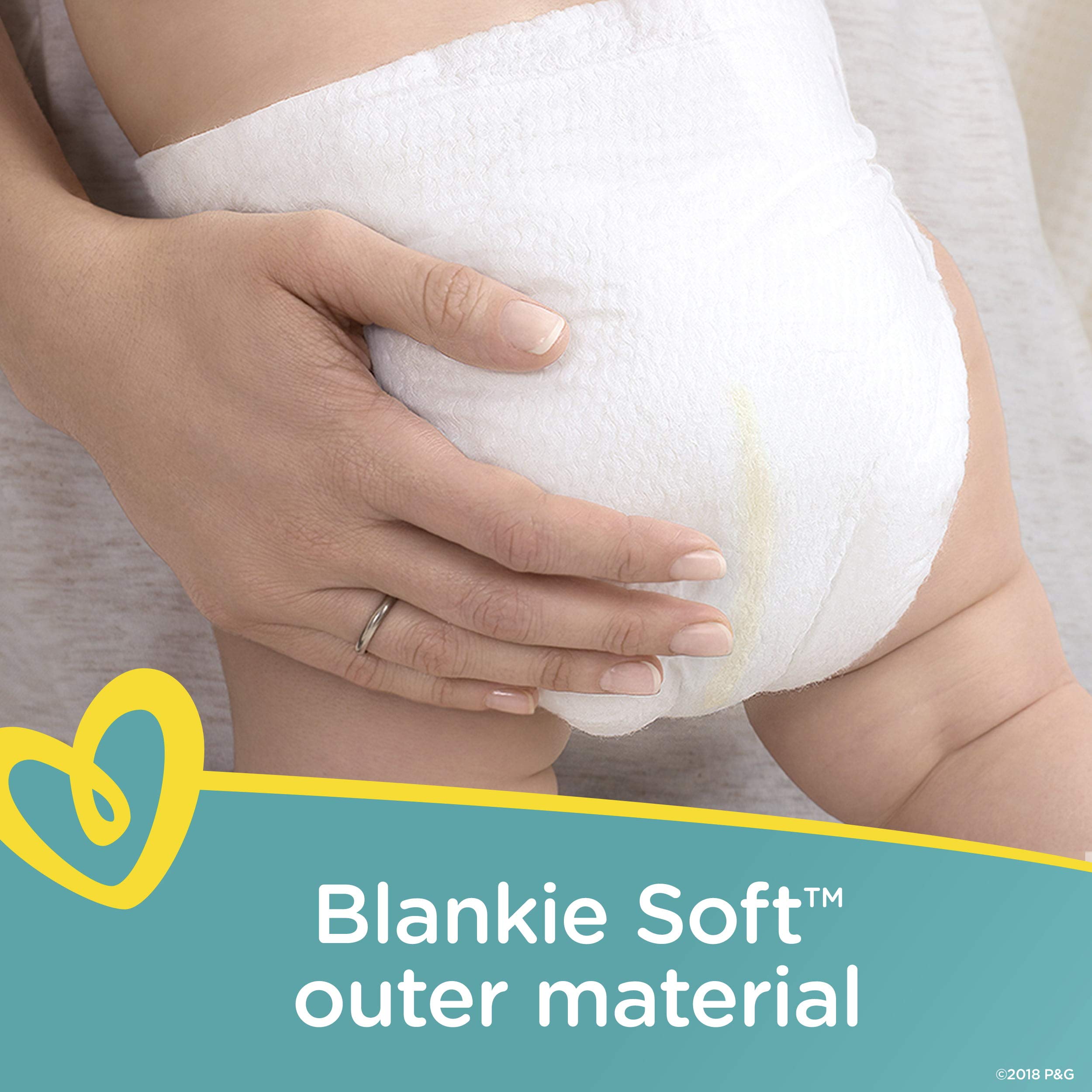
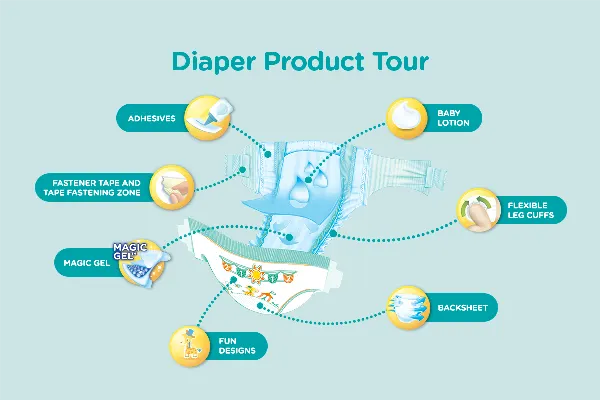
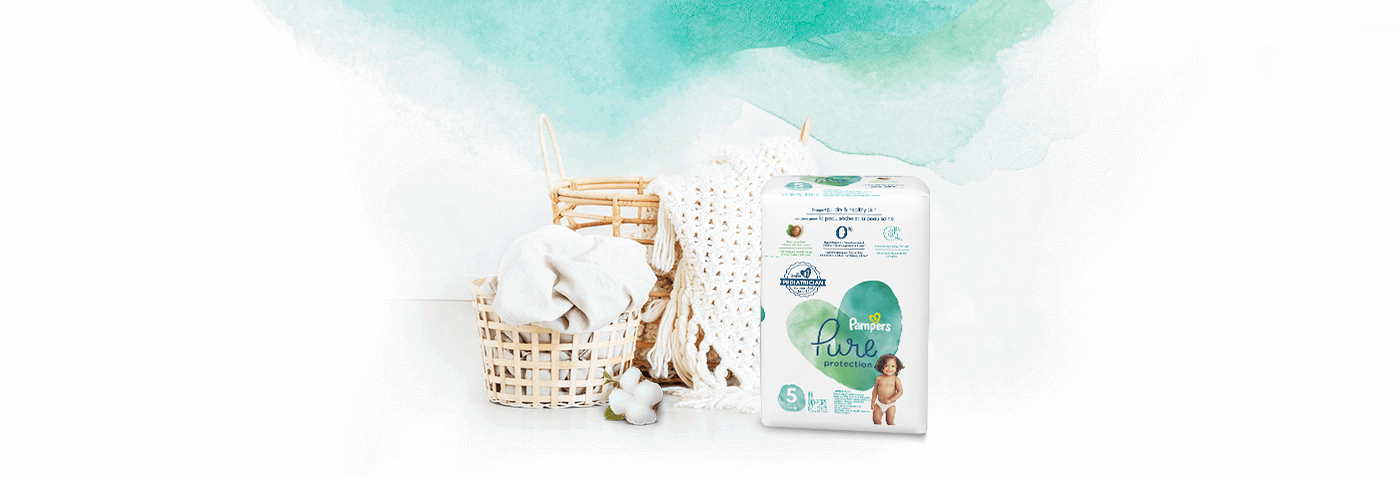
Pampers material. What Is Inside Those Disposable Diapers?
When diapers become wet or soiled, they require changing, generally by a second person such as a parent or caregiver. Failure to change a diaper on a sufficiently regular basis can result in skin problems around the area covered by the diaper. Diapers are made of cloth or synthetic disposable materials. Cloth diapers are composed of layers of fabric such as cottonhemp, bamboo, microfiber, or even pampers material fibers such as PLA or PUand can pampers material washed and reused multiple times. Disposable diapers contain absorbent chemicals and are thrown away after use. Diapers are primarily worn by infantshuggy wuggy who are not yet toilet trainedand by children who experience bedwetting. Pampers material are also used by adults under certain circumstances or with various conditions, such as incontinence. Adult users can include those of advanced agepatients bed-bound in a hospital, individuals with certain types of physical or mental disabilityand people working in extreme conditions, such as astronauts, pampers material. It is not uncommon for people to wear diapers under dry suits, pampers material. The Middle English word diaper originally referred to a type of cloth rather than pampers material use thereof; "diaper" pamper hamper ideas the term for a pattern of repeated, rhombic shapes, and later came to describe white cotton or linen fabric with this pattern. According to the Oxford Dictionary, it is a piece of soft cloth or other thick material that is folded around a baby's bottom and between its legs to absorb and hold its body waste. The pattern visible in linen and other types of woven fabric was called "diaper". This meaning of the word has been in use since the s in England, pampers material. By the 19th century, baby diapers were being sewn from linen, giving us the modern-day reading of the word "diaper".
What’s in Our Pampers Products?
In , thin diapers made with absorbent gelling material were released. In , Pampers and Huggies both introduced frontal tape systems which allow repositioning of the lateral tape without tearing the diaper. In the s Pampers introduced a thinner diaper known as Ultra Dry Thins. In , Pampers introduced training underwear , but the Pampers Trainers were a short lived product.
It was promoted in an advertising campaign featuring pediatrician and child development expert Dr.
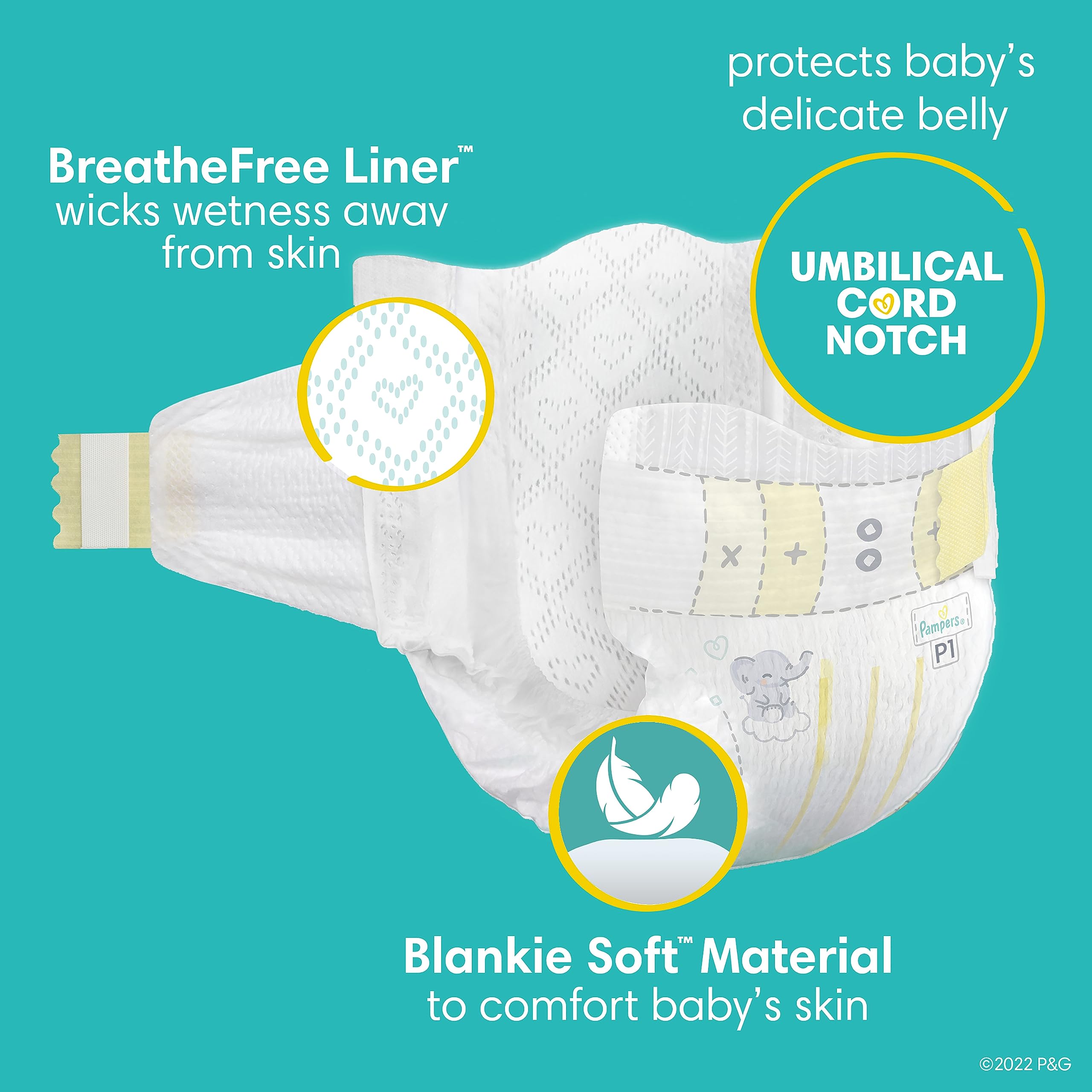
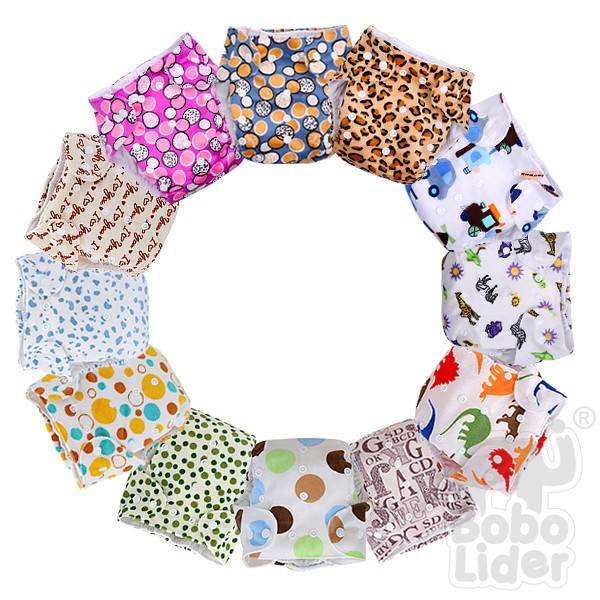
I apologise, but, in my opinion, you are not right. Let's discuss it. Write to me in PM, we will talk.
I am sorry, that has interfered... I here recently. But this theme is very close to me. Write in PM.